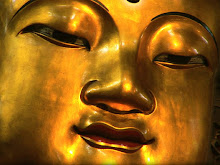The art of dreaming represents a fundamental difference between the modern scientific understanding of dreams and the hunter-gatherer archaic description of reality. In the latter it is believed that dreams can be consciously controlled and used to enhance the well-being of the practitioner and the tribe. Dreams are an important source of information, which is independent of the sequential time framework of consensus reality. The shamanic belief is that dreams are actually the source of waking consciousness, and that one dream can completely alter the entire life of an individual. Even in the Western experience, many creative and scientific discoveries have originated from the world of dreams.
Reality can be divided into waking, dreaming and sleeping states. The concept of meditation is that these three levels can be permanently unified by the breathing pattern at the deepest level of sleep, which is when the physical body is the most rejuvenated by the pre-birth energy system.
Buddhism has a very strong component of dream work, as in the following description of dream yoga:
The Middle Way view provides the philosophical framework of the contemplative practice of dream yoga. In a nonlucid dream—in which there is no recognition that one is dreaming—all objective phenomena seem to exist by and of themselves. They, like one’s own personal self in a dream, seem to be real. But upon awakening, one recognizes that neither one’s own mind nor any person or situation encountered in the dream had any such independent existence. This is equally true during the waking state, and in the daytime practice of dream yoga one maintains this awareness as constantly as possible. Everything experienced throughout the day—contrary to appearances—arises in relation to one’s perceptions and conceptions. Every person encountered is perceived in relation to one’s own sensory and conceptual faculties. Never does one encounter the radically and absolutely “other,” for apprehension of the other is always dependent upon one’s own subjective perspective. Thus, upon fathoming the emptiness of inherent existence of all waking phenomena, one maintains throughout the day a sense of the dreamlike quality of all events, recognizing the profoundly intersubjective nature of all relationships with other beings and the environment.
- B. Alan Wallace, Contemplative Science
In shamanic cultures, it is believed that dreaming presents an opportunity to avoid misfortune in waking life, if fears and obstacles are successfully confronted and transcended in the dreamworld. Even though many scientists solve significant theoretical problems using dream information, our culture has only just begun to understand and investigate the potential of dream practices, including lucid dreaming, to enhance creative problem solving. Artists and poets and writers are clearly dependent upon dream information from the unconscious, yet very few scientists are using hypnosis or self-suggestion to achieve greater clarity in dreams.
About Me

- KTBMovie
- "Lost Secret of Immortality" For thousands of years, science and religion have searched for the key to enlightenment. Killing the Buddha uncovers the sacred knowledge of the Philosopher’s Stone and guides viewers to the mysterious Kundalini – the original enlightened energy of the body. Filmed in China and Tibet, this revolutionary film reveals the secret of practicing sexual yoga to achieve tantric enlightenment. Visit www.killingthebuddhamovie.com for more information about the motion comic and movie.
No comments:
Post a Comment